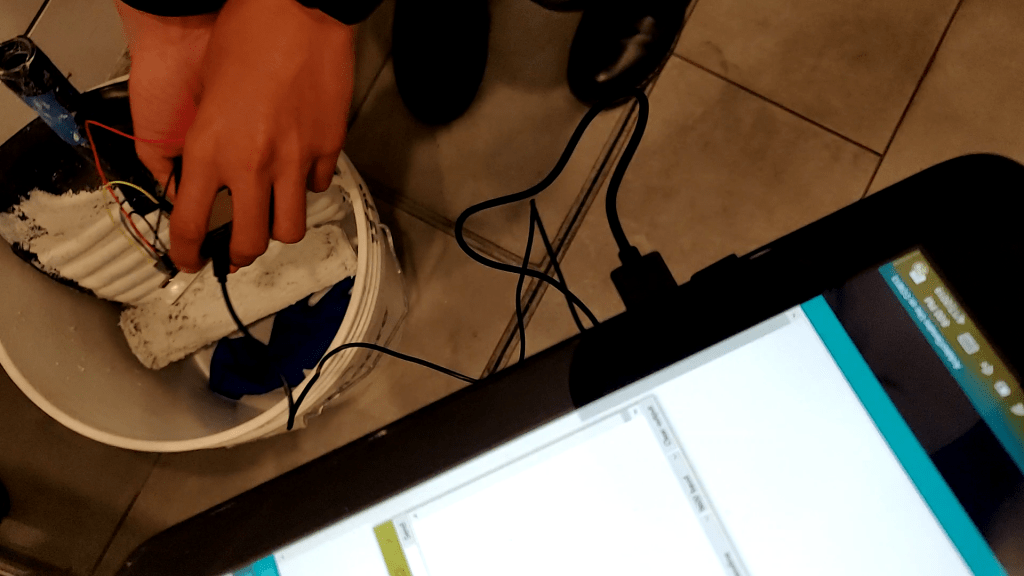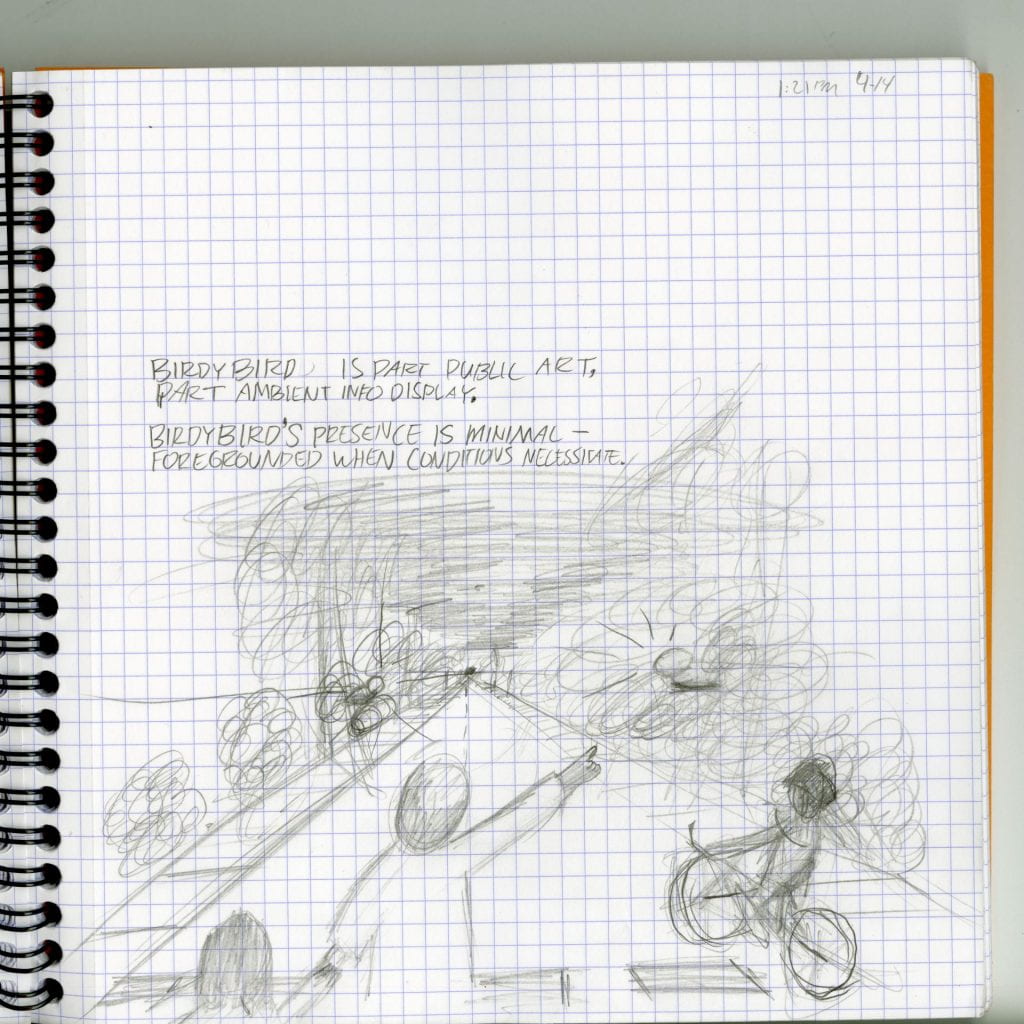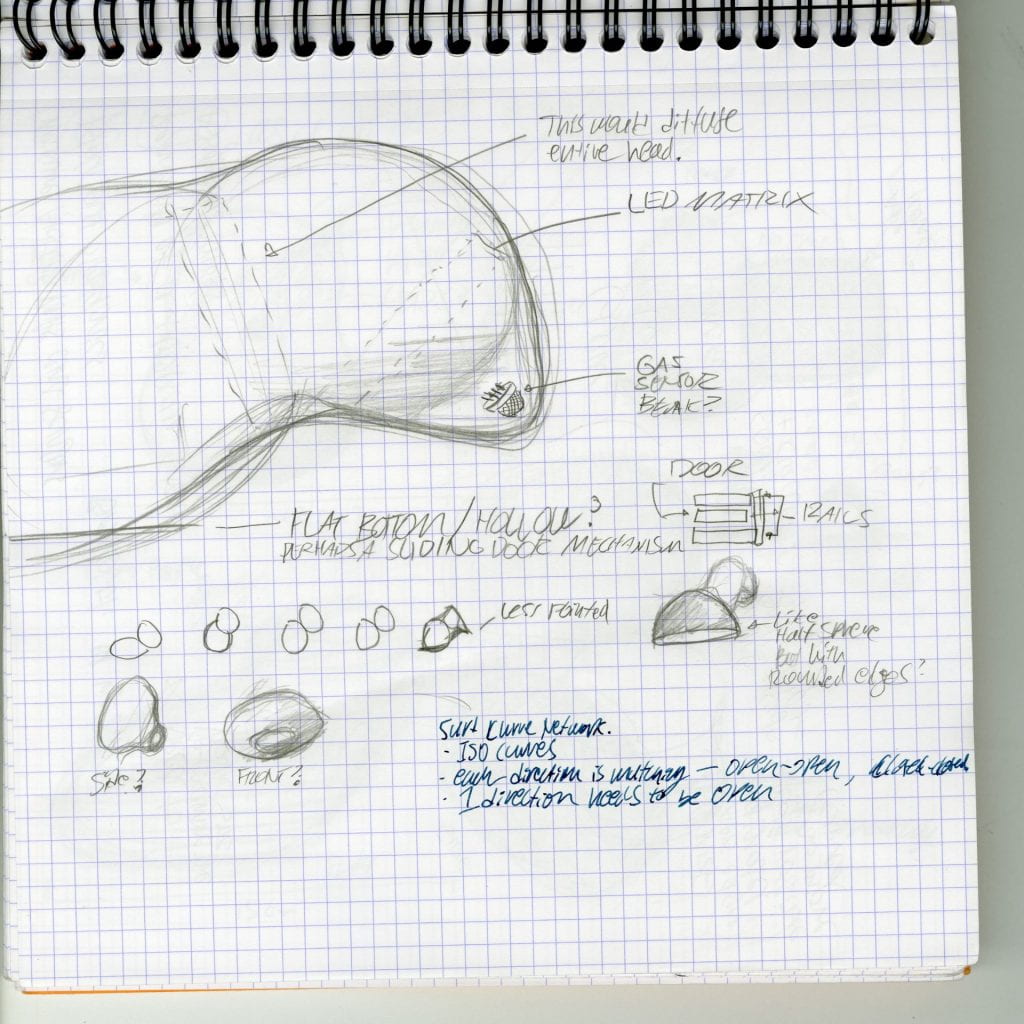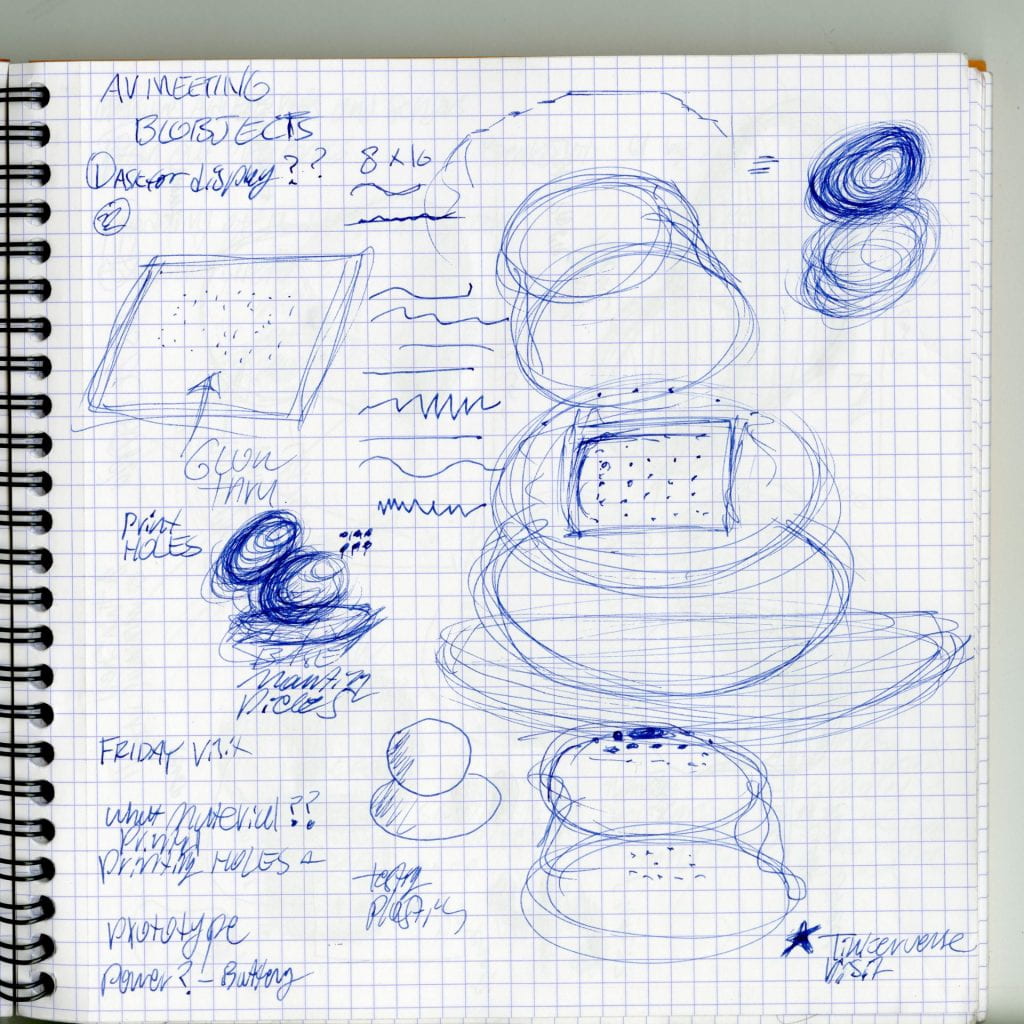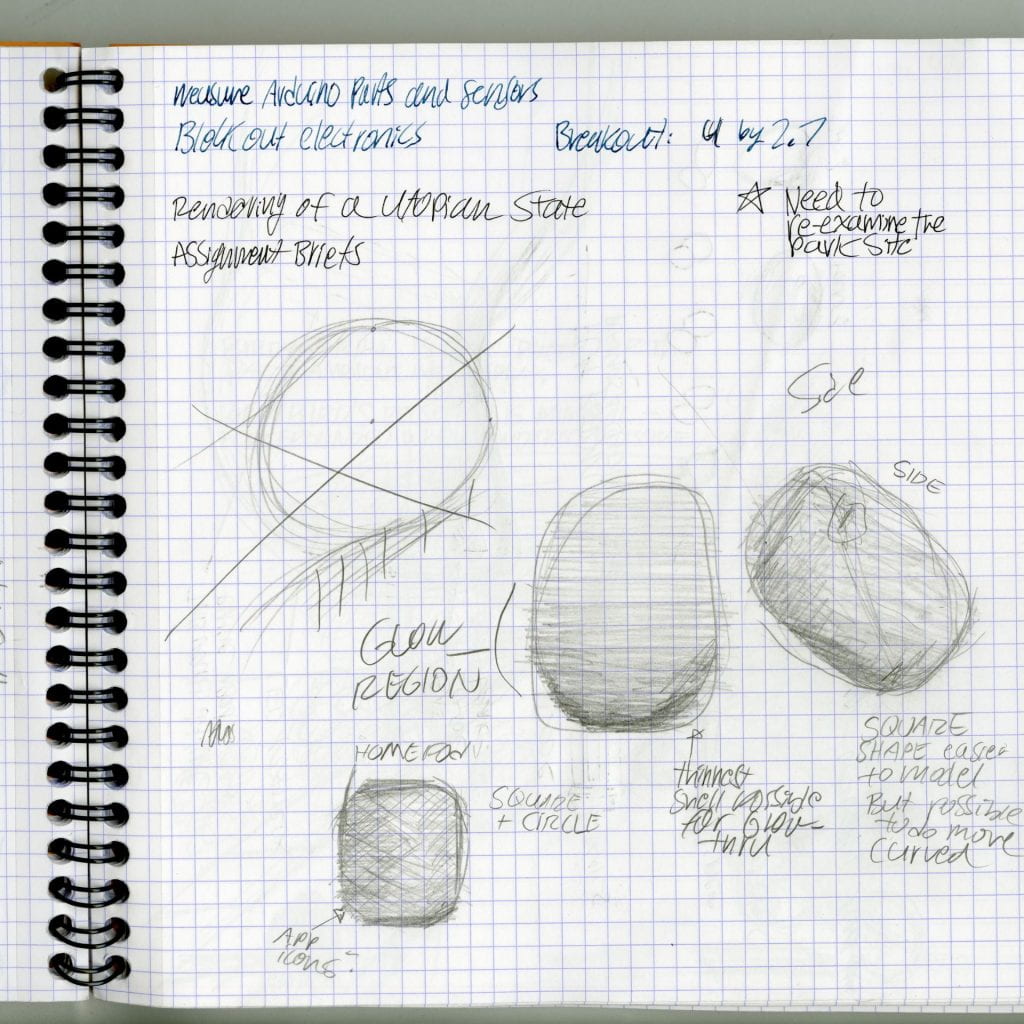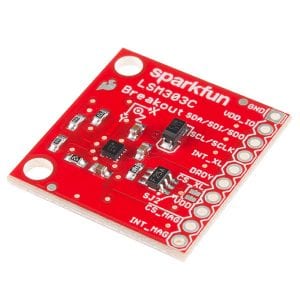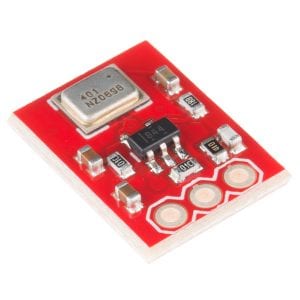Cute meets quant. BirdyBird imagines a future where invisible environmental metrics can be made visible and emotive. BirdyBird detects the presence of total volatile organic compounds (TVOCs) and equivalent CO2 in the air and displays this information through its “breathing” animation.
BirdyBird is a cute robot bird that beckons humans to become emotionally invested in improving environmental quality. BirdyBird is a project that brings into conversation DIY sensing, design, and the emergent field of urban informatics to raise awareness about the daily experience of air quality. BirdyBird takes on the abstract form of an installation which actively collects and stores air quality data. BirdyBird emits a warm, red glow that amplifies in intensity to mimic the pace of one’s breath. A faster breath implies difficulty breathing as a result of heightened detected quantities of Total Volatile Organic Compounds (TVOC) and Carbon Dioxide (CO2). Anecdotal folk knowledge suggests that dogs, birds, bats and other animals of even larger sizes can sense earthquakes hours or even days before they strike. Before humans could employ electronic sensors to safely and continuously monitor and conceive invisible environmental conditions, they relied on the senses and expressions of animals to discern equilibrium flux in the environment. Humans have exploited this quality throughout history; Canary birds were such a sentinel species, used in the mining industry to detect the buildup of toxic gases such as carbon monoxide.






